This weekend saw the end of the first round of fixtures for Group A3 in this year’s UEFA Nations League.
Germany travelled to Budapest to face Hungary looking for their first win in this year’s tournament. The Germans have been uninspiring in the previous two games against Italy and France and Hansi Flick will have been looking to change that as he looks to bring more proficiency to his side’s attacking play. Marco Rossi will be happy with Hungary’s position coming into this game. The Hungarians were sitting in second place before the game and although a loss would have seen them lose that place, a win would have seen them potentially move up to the first position.
The game finished in a 1-1 draw and Hungary remain in second above Germany. This tactical analysis will focus on the key tactics set by Rossi and how Hungary imposed them on Germany to help shape the result and performance of both teams.
Line Ups and Tactical Approach

Marco Rossi was forced into one change with Andras Schafer suspended, and so Barnsley midfielder Callum Style took his place in central midfield. Peter Gulacsi also returned to action having sat out the defeat to Italy.
Rossi also opted for one extra change as Attila Fiola replaced club teammate Loic Nego on the right-hand side.
For Germany, Hansi Flick made several changes following Tuesday night’s draw with England. Both Thilo Kehrer and Niklas Süle replaced Antonio Rudiger and Lukas Klostermann to play alongside Nico Schlotterbeck in a back three. Leon Goretzka returned to play alongside Joshua Kimmich in midfield and Chelsea forward Timo Werner replaced Thomas Muller to play up front with Jamal Musiala and Kai Havertz.
Serge Gnabry remained on the sidelines due to his minor calf issue and it was confirmed before the game that Marco Reus will miss the next two Nations League games due to a muscle injury.
Both teams were set up in a 3-4-2-1 formation but both managers had two different tactical approaches to this game. Hungary maintained the usual approach that Marco Rossi has implemented since he’s been in charge. This is to keep a solid defensive structure out of possession and then once possession is won get the ball forward quickly and attack in numbers.
Hansi Flick again opted away from his 4-2-3-1 formation for second-game running. Germany still maintained the same principles within their play with an emphasis on positional play. They aim to overload the pitch centrally to create spaces out wide and then transition into a 3-2-5 attacking shape that overwhelms their opposition’s defensive line.
Hungary’s Defensive Structure.
Hungary’s defensive structure proved to be very effective in this game. Germany finished the game having 67.3% possession but only had six attempts on goal. With two of those attempts being from set-pieces that meant Germany only created four attempts from open play.
Out of possession, Hungary’s 3-4-2-1 shape switched to a 5-2-3 shape they looked to stop Germany from playing through the middle of the pitch and force them into playing through the wide channels. They pressed aggressively against the ball, but the press was applied positionally as the rest of the team look to maintain a solid defensive shape.
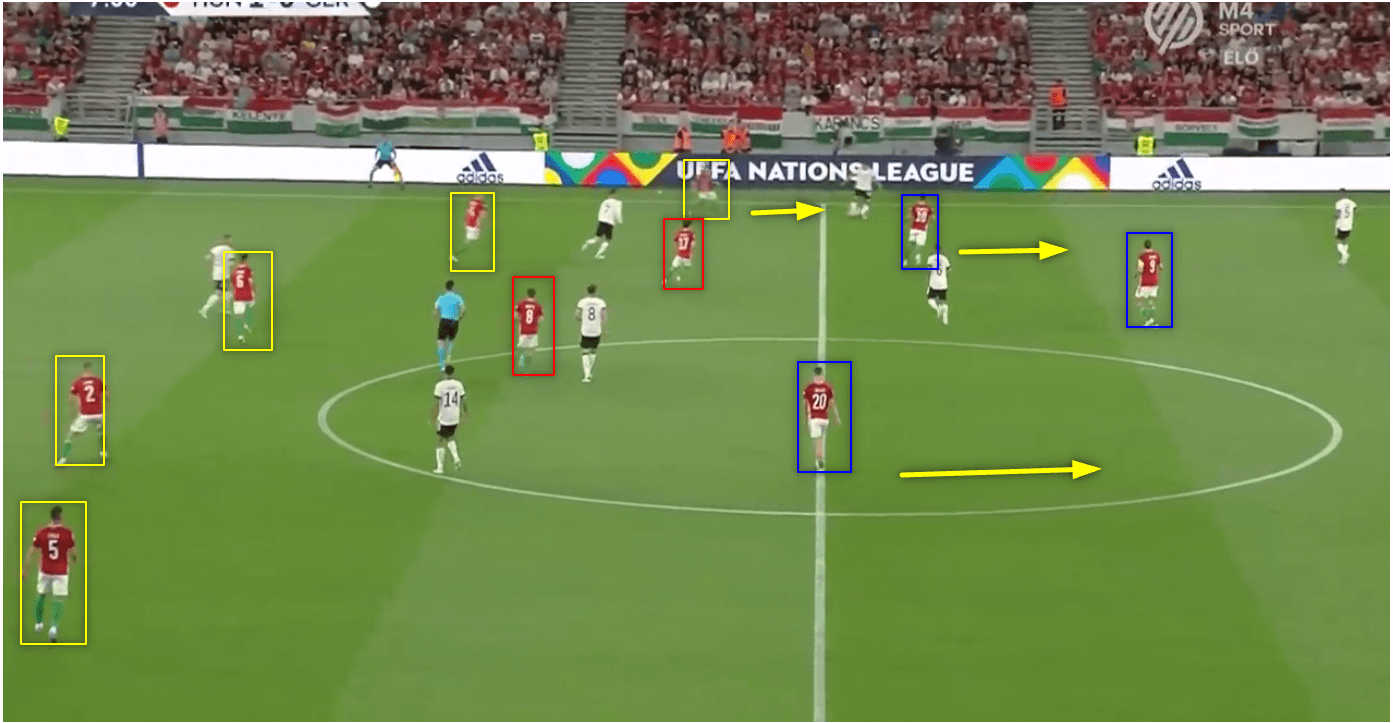
They maintained this defensive shape all over the pitch. The team moved fluidly between high, medium, and defensive blocks depending on the location where Germany was holding possession. When Germany moved the ball vertically or into the Hungarian half, you could see the change in intensity in Hungary’s press as they then looked to actively force Germany backwards and compress the space between the lines.
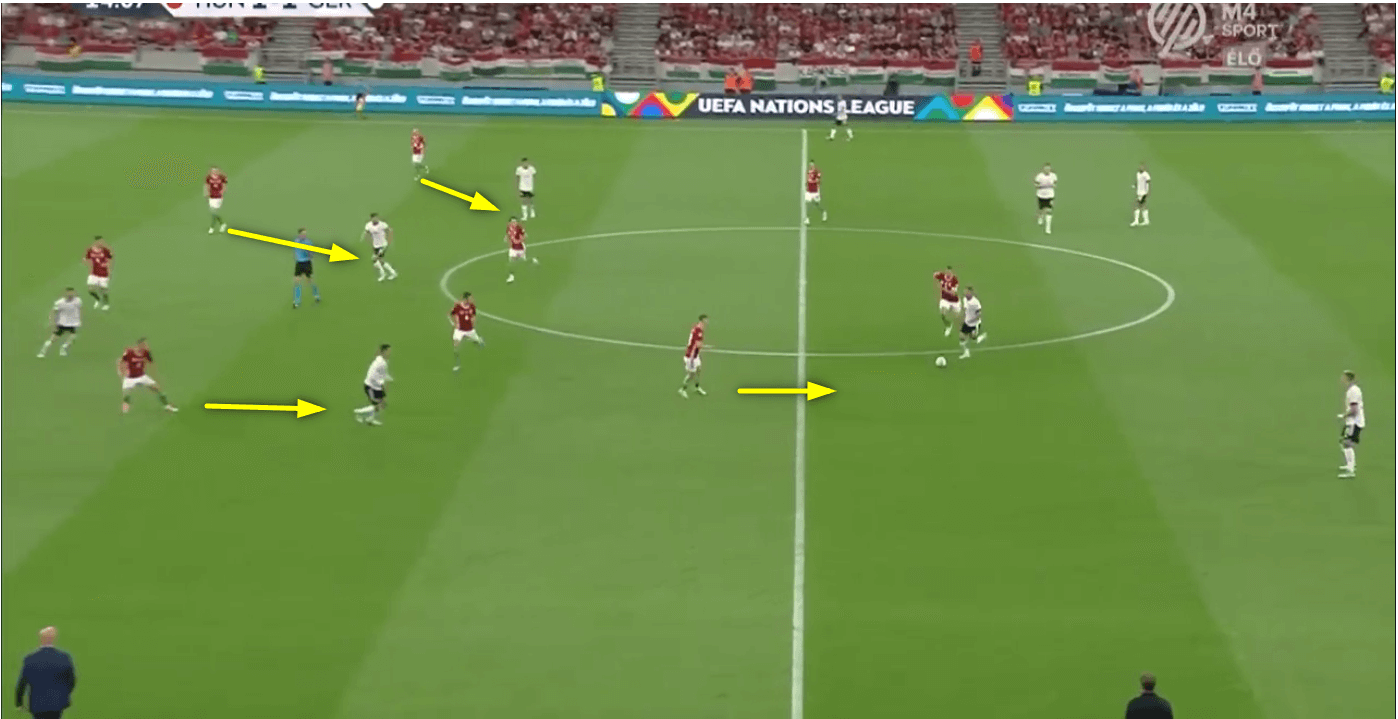
When Germany’s centre-backs held the ball Hungary didn’t press aggressively, they positioned themselves narrowly and blocked any open space to prevent Germany from playing through them. This forced Germany into long balls as they sought to get Kai Havertz and Timo more involved in the play.
In this image below, Germany have held possession for a sustained period. As Nico Schlotterbeck is carrying the ball both Havertz and Werner have dropped deeper. But you can see how Hungary is set to close down all viable passing options available for Schlotterbeck to be able to progress the play.
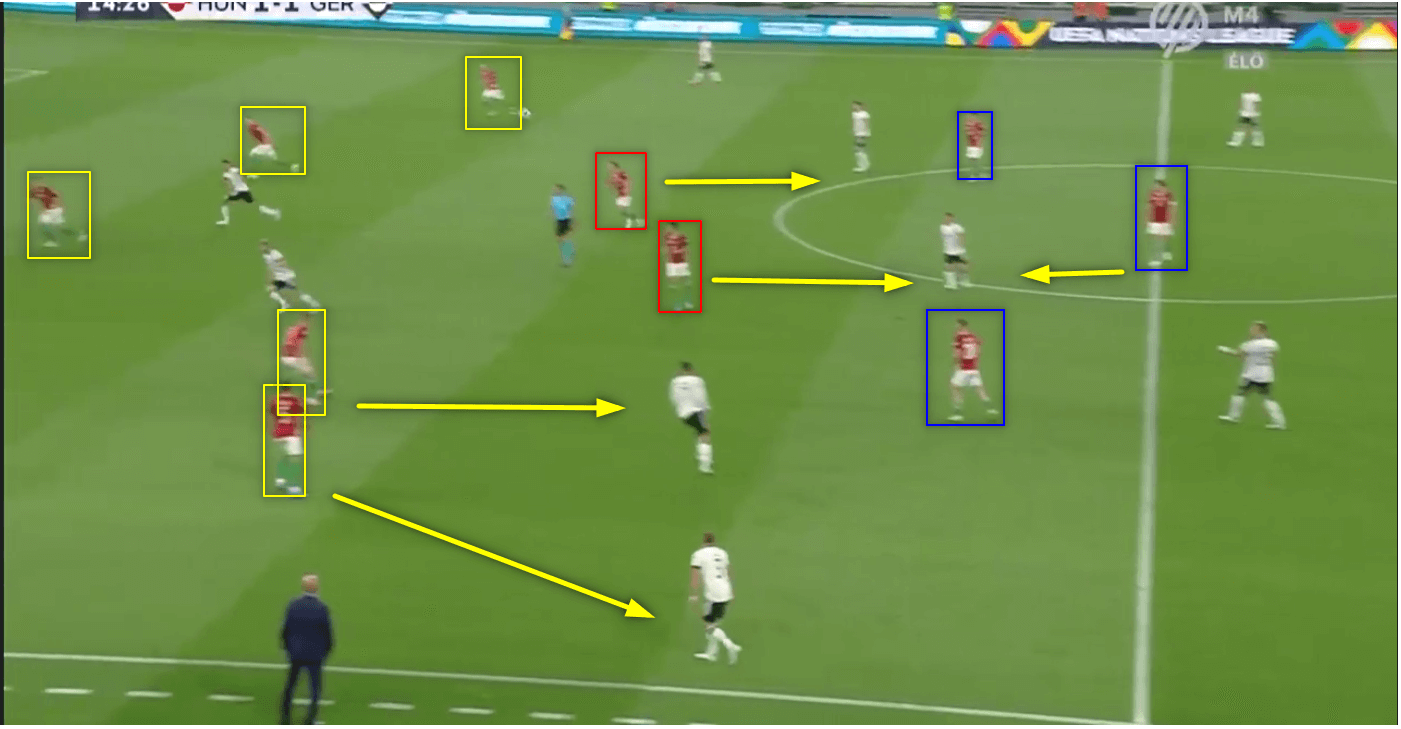
Hungary’s Direct Approach.
Rossi’s men offered good variety within their attacking approach. Their game plan to keep a solid defensive shape out of possession was clear. However, you could also see how when they had the ball, they also had a game plan on how to be effective and take advantage of any of Germany’s vulnerabilities.
During their build-up, Hungary switched between playing out through the defence and playing a long ball up to the forward line. Occasionally they would play out through the centre backs to draw Germany towards the ball and if they beat Germany’s initial press they would then play quickly and directly.
This next example shows how Hungry took advantage of Germanys pressing structure. Germany are pressing high in a flat line. This involved the front three of Werner, Havertz, and Musiala and then depending on which side Hungary built down, the wing-back from that side would push high to block off the channel. In this instance, it was Jonas Hofmann.
Joshua Kimmich is drawn out to the right-hand side because Dominik Szoboszlai pulls out wide as part of the build-up. This leaves a big space centrally. As Hungary play the ball back into the middle of the pitch, they now have an open space to carry the ball forward and dictate where they want to. Because Leon Goretzka is isolated, he has no other choice but the close the space in front of him which leaves Hungary 4v4 with Germanys defenders, a 2v1 overload on the right-hand side and the whole of Germanys half of the pitch to attack into.
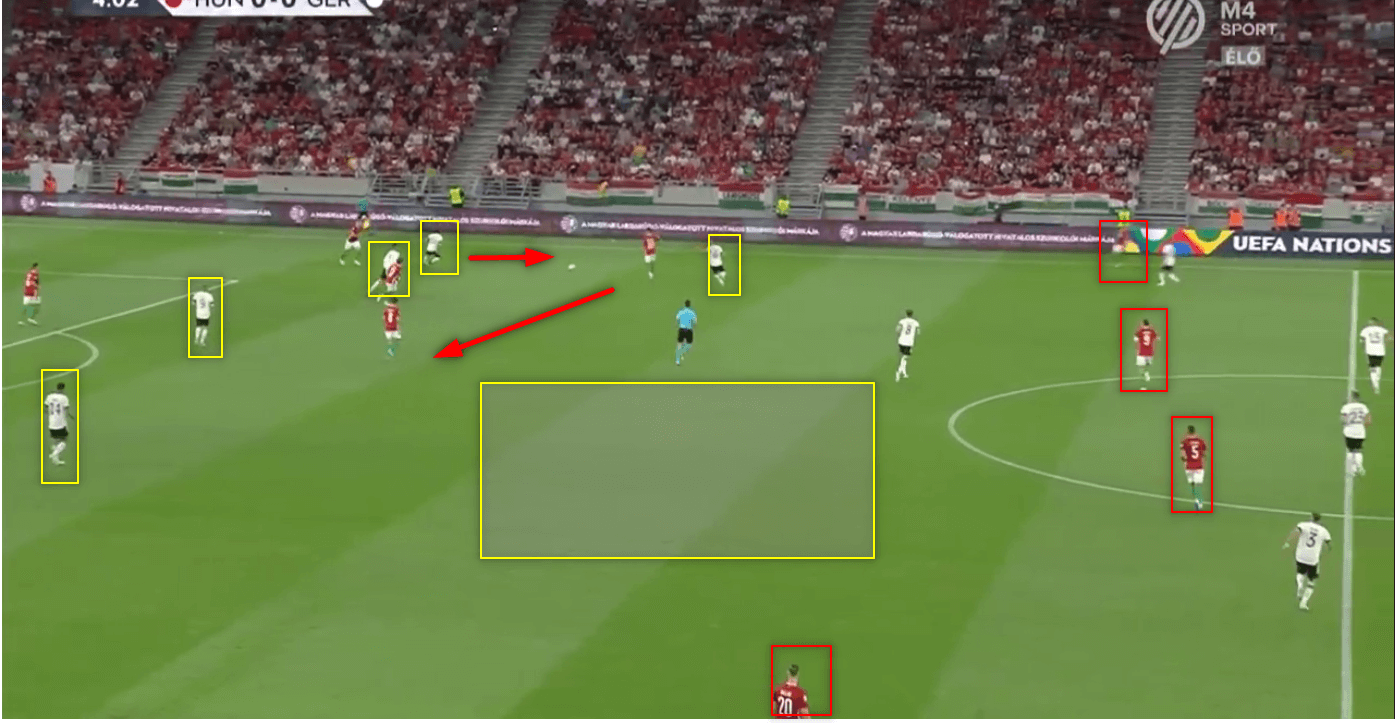
Marco Rossi’s tactics included playing direct balls into the space and stretching Germany’s defensive shape. Germany’s defensive phase included sitting in a 5-2-3 shape. However, the cohesiveness and strength of their shape weren’t applied in the same manner as Hungary’s, as Hungary imposed Rossi’s tactics a lot better.
Hungary’s wide players were the key to how much of an impact Hungary’s direct play was having on the match. The positions they were taking up were forcing Germany wing-backs David Raum and Jonas Hofmann into making Germany’s defence a back five. Like this situation below which results in Hungary scoring their goal.
You can see the position that Hungary’s wingbacks Nagy and Fiola have taken up and how much space they must attack not just behind Germany’s defence but down the right-hand flank. This happens because the ill-disciplined position Hofmann takes up on the right-hand side forces Germany’s defence to shift across to the right. Once this happens Roland Sallai looks to exploit the space on Raum’s inside as Fiola attacks on his outside.
From this point in the image, Hungary achieves an attempt at Germany’s goal in two passes and scored on the rebound.
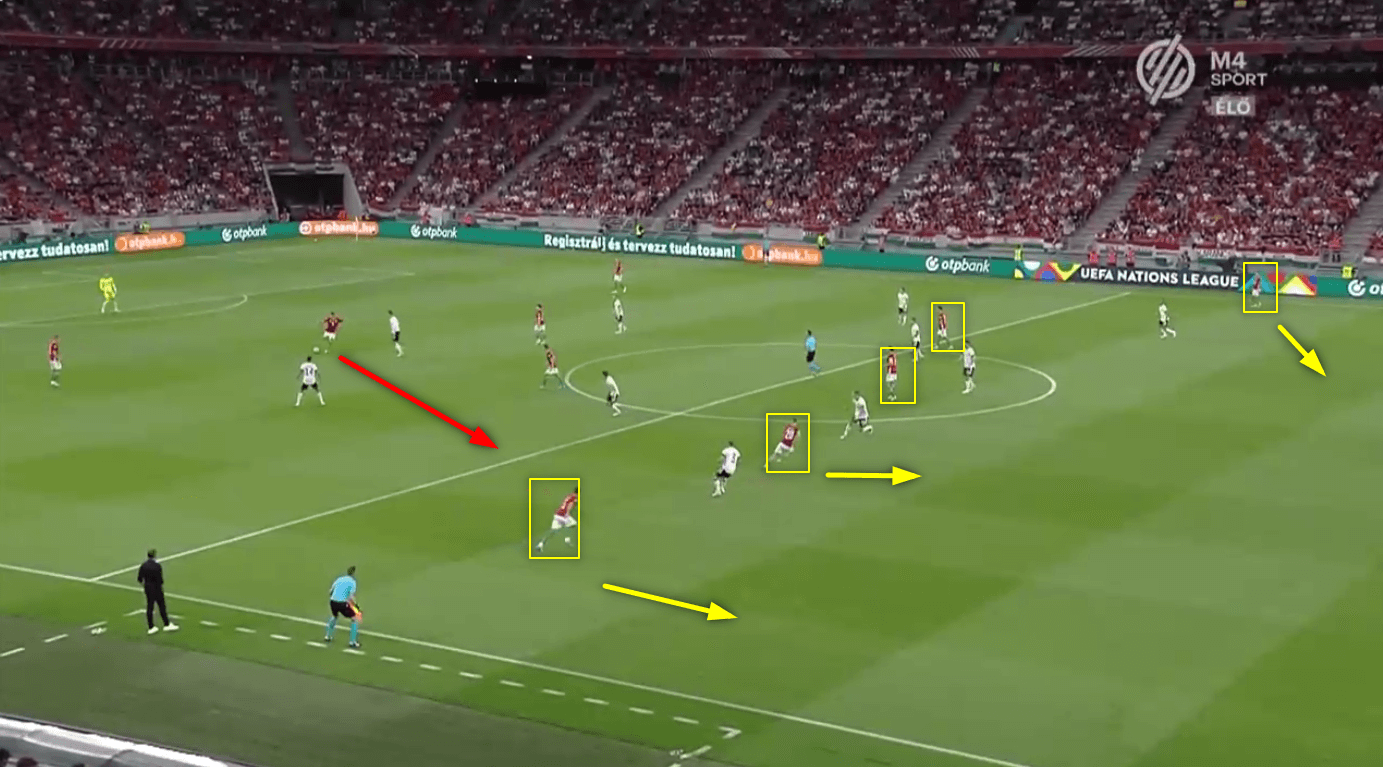
Hungary playing in behind one of Germany’s wing-backs and overloading the opposite side was a common theme throughout this game. Germany’s defensive structure and transitions from attack to defence were just not good enough. Part of Flick’s tactics must have been for Jonas Hofmann to play narrow and support Kimmich and Goretzka centrally because Borussia Monchengladbach kept getting caught out by Hungary down that side.
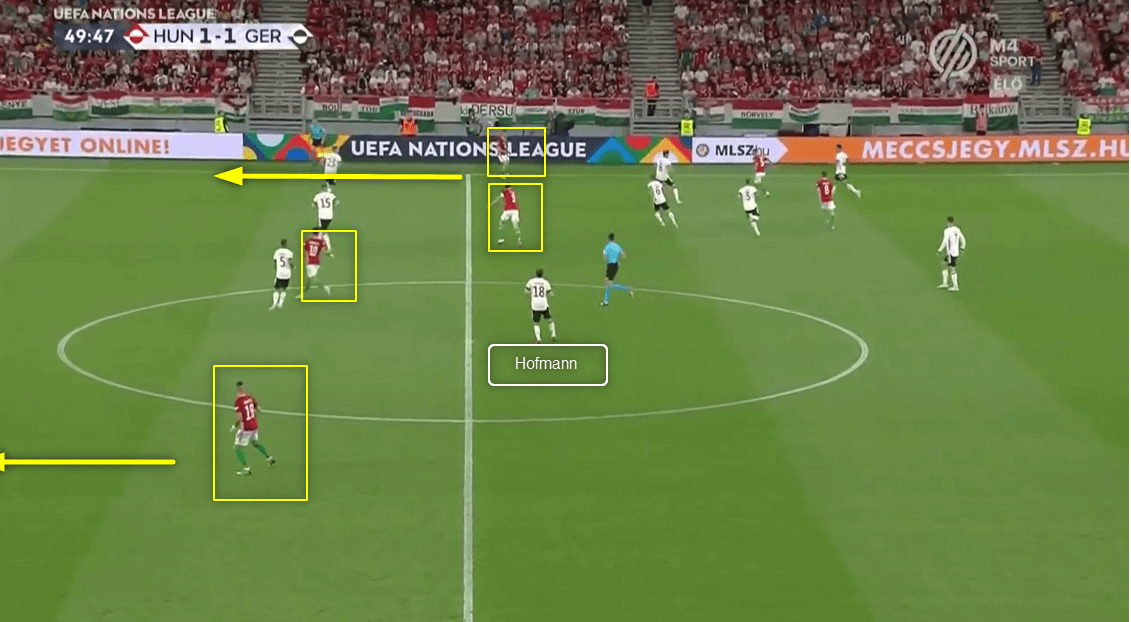
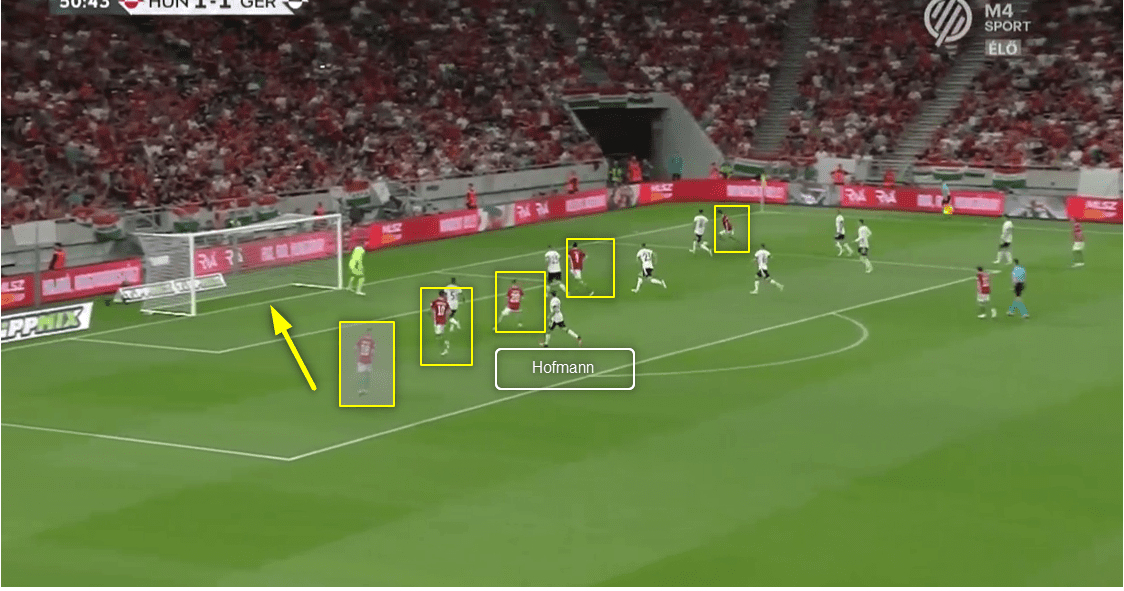
Germany’s Lack of Conviction
Parts of Germany’s positional play were good. Their build-up play and movement up to the middle third were solid at times, but Hungary were happy for Germany to have possession up to this stage. Part of the principles within the positional play approach is to move the opponent from their position and break their defensive shape. Hansi Flick and his team had the same issue against Italy and England. They controlled the game very well at different stages but their balance and overall attacking play in the final third lacked conviction.
The front three of Havertz, Werner and Musiala were struggling to get on the end of attacking opportunities and then ended up coming into areas where they weren’t effective in getting involved in the game.
As Leon Goretzka receives the ball Jonas Hofmann makes a diagonal run in behind the defence. The problem here is Timo Werner is also making the same run to the same but coming in from the left. If there was a clear understanding Hofmann would have been making a run on the outside of Hungary’s defence which would have still created space for Goretzka to make the pass but Hungary would have had to deal with two runs to two different areas, which would have caused their defensive line to break.
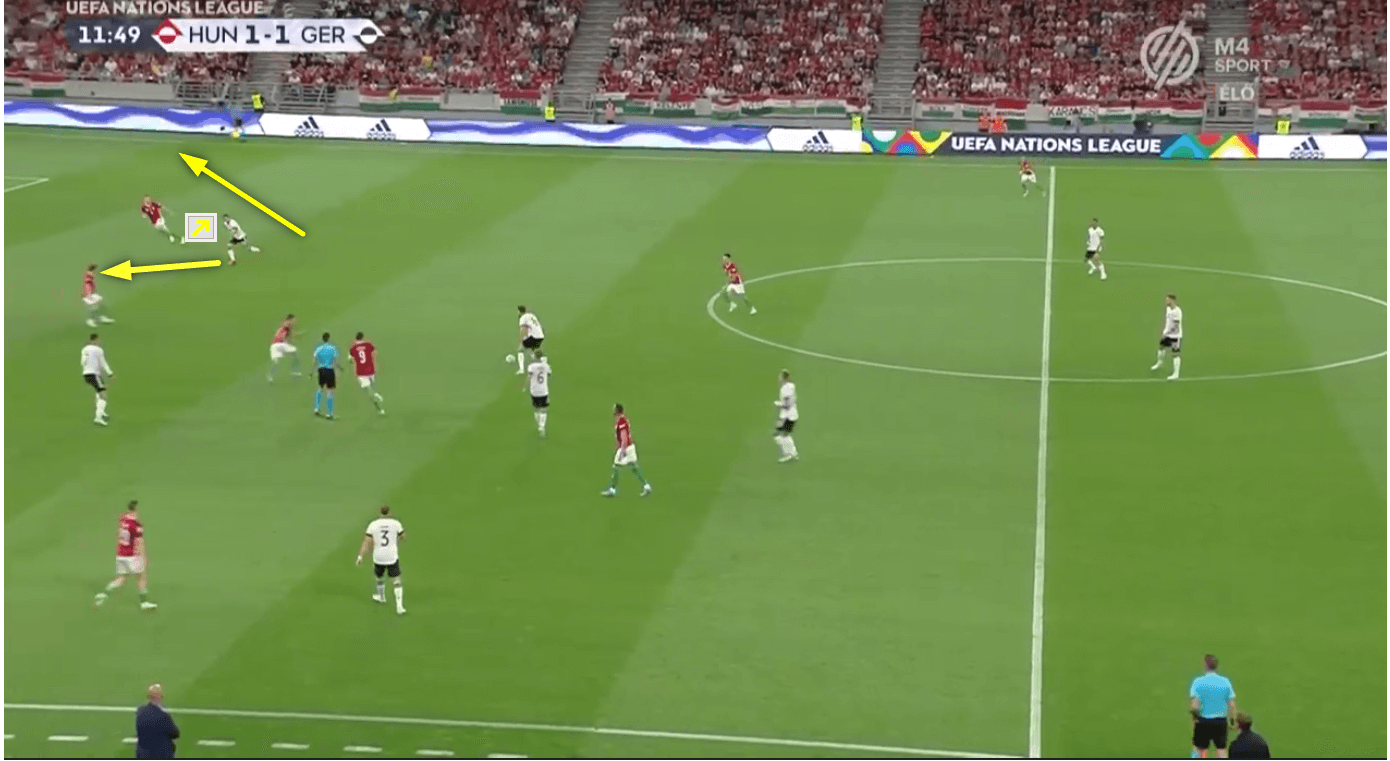
This image shows how narrow Germany’s attack becomes. This makes it easy for Hungary to press Musiala in numbers as they are closer together. Musiala cannot progress the ball forwards or look to create space in Hungary’s defence in this scenario. There is no width down the right-hand side. The width option down the left is coming too late and both Havertz and Werner are standing in positions that make it easy for Hungary to defend as Musiala cannot get the ball through to them.
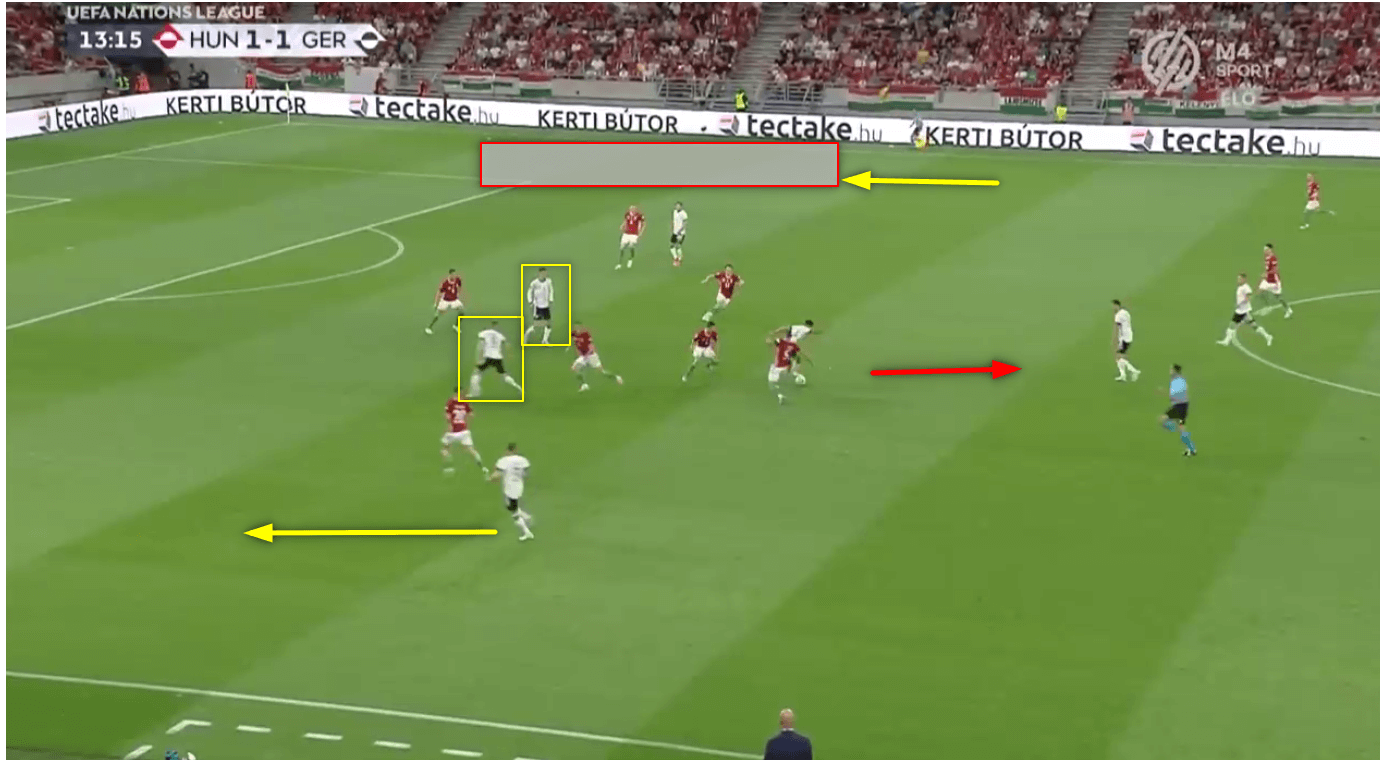
This was happening on too many occasions for Germany. Their possession had no purpose due to players not making enough space, being positioned in the same space, or running into the same space. If Flick persists with this formation, then Germany will need to play more vertical-based football. They will need to be quick in attacking transitions and they will need to switch the play as in this game they allowed Hungary to compress the space laterally as they were too slow in taking the ball across the pitch.
Their equalizer and only goal came from a quick long diagonal ball over the top. Which was one of the very few times they were quick and direct in possession. Nico Schlotterbeck is the ball carrier and immediately moves the ball over Hungary’s defence and onto Hofmann’s run. The speed of thought didn’t allow Hungary time to close the playdown or force the play into a different area. Schlotterbeck has more options because he opts to make the pass quicker.
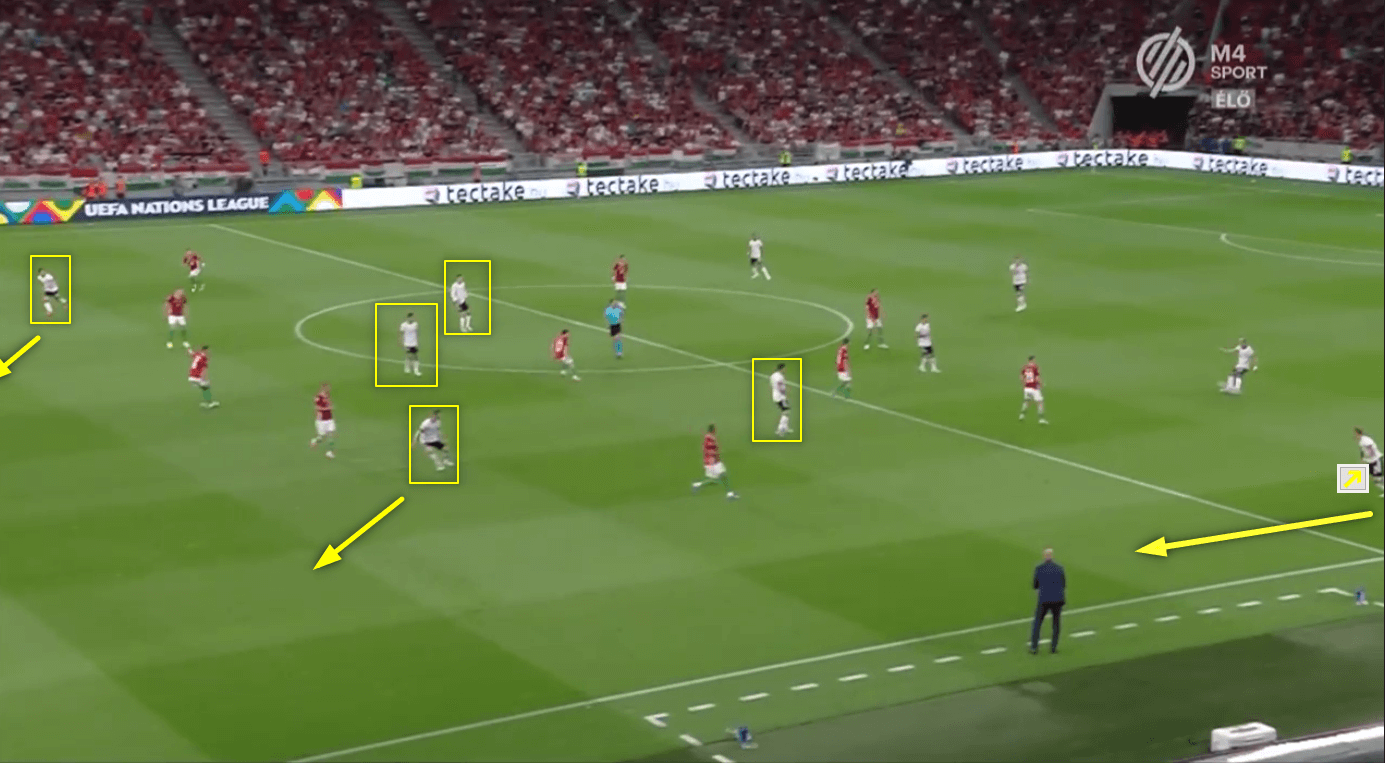
Conclusion.
The plus side for Hansi Flick is that Germany remains unbeaten under his stewardship, but that’s now four draws in a row and each one resulting in the same negative tactical trends. There is no doubt the ex-Bayern Munich manager is experimenting with his formation and personnel but at this moment Germany’s attacking threat needs to improve.
Marco Rossi will be very happy with his team’s performance and how well his tactics have impacted each game they have played so far.
This analysis has shown the key components of Rossi’s tactics and how he implemented them to get a great result. The variation between Hungary’s defensive block and direct play caused problems for Germany’s attacking defensive approach.






Comments